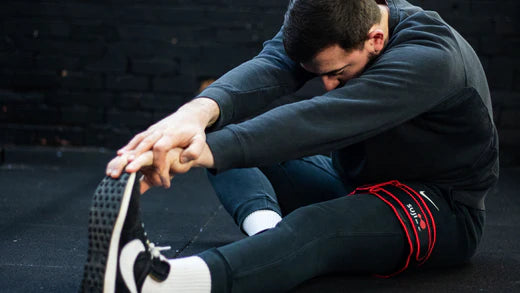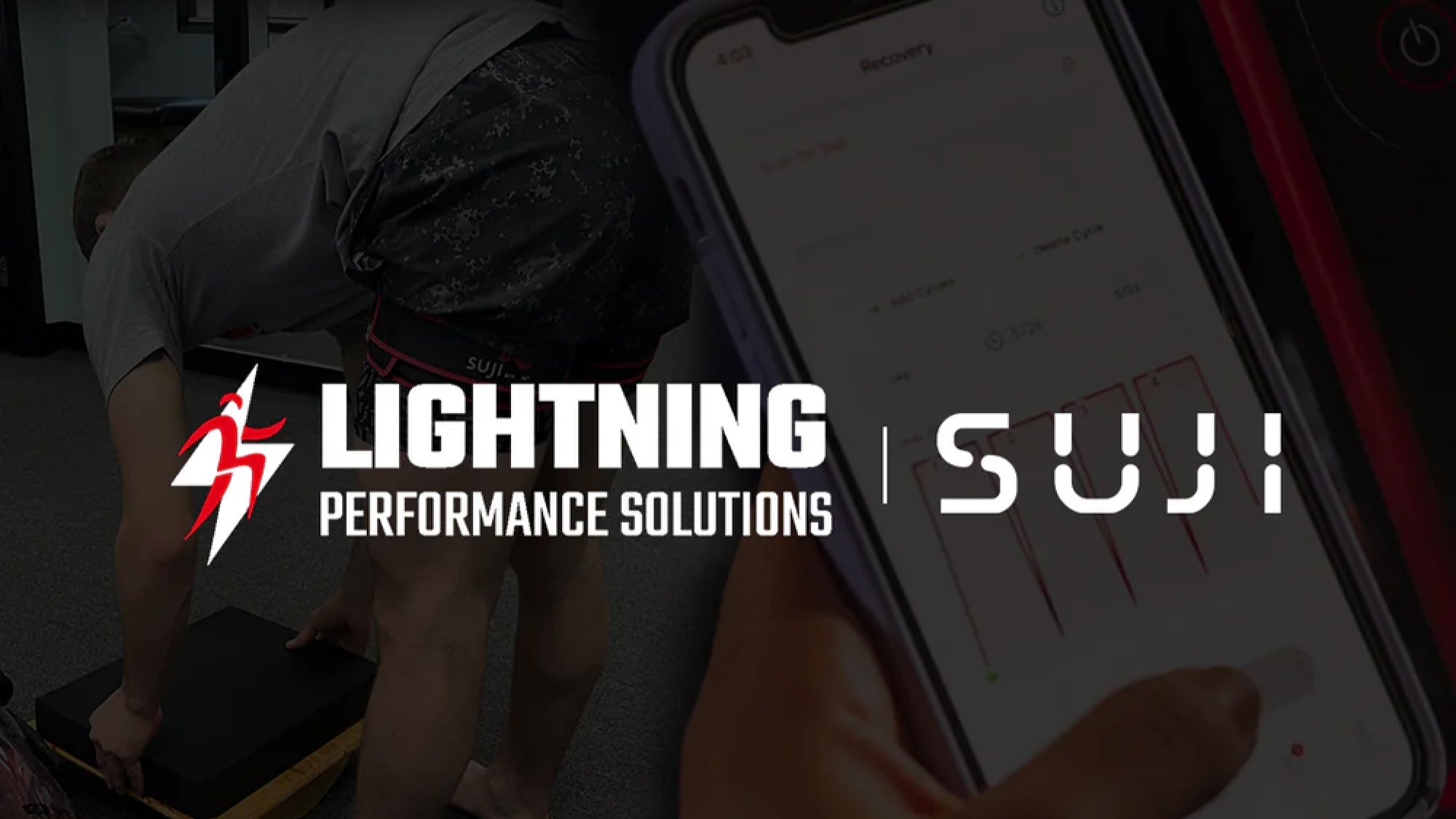- Passive BFR: This involves BFR applied in the absence of an exercise stimulus. Passive BFR has been shown to be effective at attenuating muscle loss associated with disuse atrophy commonly seen in people who are immobilized such as post-surgical patients.
- BFR aerobic exercise: Aerobic exercise is not typically associated with improvements in muscle mass. In-fact aerobic exercise is known to inhibit increases in muscle mass when combined with a resistance training programme. However, when combined with BFR, aerobic training interventions such as cycling, walking and running have been shown to be effective at increasing muscle mass by up to 5-7% over 3 weeks (Abe et al. 2006).
- BFR resistance exercise: The largest increase in muscle mass is observed when BFR is combined with low-intensity resistance exercise. Improvements in muscle mass have been observed with training intensities as low as 15%. Increases in muscle mass are often compared to more traditional resistance exercise, with much of the research producing encouraging findings.

Figure 1: BFR training is an effective stimulus for muscle growth.
BFR training vs. traditional exercise:
When compared to traditional training methods, most research will use one of two potential comparisons; an exercise-matched control where subjects complete the same low-intensity exercise without BFR, or a high-intensity resistance training method typically used to increase muscle mass (~70-80% 1RM). When compared to an exercise-matched control BFR training produces a superior hypertrophy effect when using both aerobic and resistance training methods (Slysz et al. 2015). However, when compared to HI-RT, BFR training produced comparable results (Lixandrao et al 2016). These are important findings because the potential to achieve similar training results using a much lower training intensity has considerable implications for certain populations (Who should use BFR training?).Mechanisms of action:
There are several physiological mechanisms that appear to facilitate adaptations to BFR training.Cell swelling:
The application of a BFR training cuff will partially restrict arterial blood flow while fully restricting venous return, promoting blood to pool in the capillary bed of the target musculature. Often referred to as "the muscle pump" this process of cellular swelling has been shown to increase muscle protein synthesis and decrease protein degradation. These responses are essential components in triggering muscle hypertrophy and is often presented as a key mechanism through which BFR may contribute to enhanced muscle growth.Preferential recruitment of fast-twitch muscle fibres:
BFR training will create an artificial state of hypoxia within the working muscle, similar to that experienced during high-intensity exercise. Fast-twitch muscle fibres are anatomically designed to function in low-oxygen conditions and are hence typically only recruited during high-intensity exercise. These fibres posses the most potential to grow and produce force when stimulated, partially explaining why HI-RT is typically required to trigger hypertrophy. BFR training has been shown to preferentially recruit fast-twitch muscle fibres during low-intensity resistance exercise (Yasuda et al. 2009).Anabolic hormone production:
It has been suggested that acute increases in anabolic hormones such as testosterone and growth hormone (GH) play a key role in regulating the muscle growth response to HI-RT. BFR combined with low-intensity resistance exercise has been shown to increase GH, testosterone, insulin-like growth factor-1 and cortisol in response to a range of different protocols. This increase is superior to that achieved with an exercise-matched control and appears comparable to that achieved with HI-RT.Hypertrophy signalling pathways:
There are many gene signalling pathways that control the process of hypertrophy. These pathways are typically activated by multiple variables common to high intensity exercise such as mechanical stress, hypoxia and metabolic waste among others. Perhaps the most well researched pathway is the mTOR pathway. BFR restriction training when combined with resistance exercise has been shown to upregulate various components of the mTOR pathway to stimulate muscle hypertrophy (Fujita et al. 2007). Further, myostatin is a gene responsible for inhibiting muscle growth, and is essential to maintain the balance of muscle turnover within the body. BFR training has been shown to diminish myostatin gene expression providing another potential pathway through which BFR may increase hypertrophy (Laurentino et al. 2012).Accumulation of metabolites:
BFR training causes the accumulation of metabolites such as lactate, inorganic phosphate and hydrogen ions, common to anaerobic metabolism. This metabolic stress has an important impact on cellular swelling, hormonal release and the formation of reactive oxygen species. All of these responses can initiate anabolic signalling pathways responsible for muscle growth.
Figure 2: Training with BFR can increase the biochemical response to resistance training.
Training considerations:
To effectively optimize muscle hypertrophy using BFR training techniques there are several potential moderators that need to be considered. While the research surrounding the optimal BFR training regiment remains a topic for debate, adaptations to BFR appear to adhere to basic training principles of progressive overload. Four key variables appear to be potentially important when considering a BFR training programme:- Training duration: BFR training programmes of >6-8 weeks appear to be the most effective at achieving a muscle hypertrophy response. However, significant increases in muscle size have been achieved in as little as 8 days during an intensive resistance training protocol consisting of 2x BFR training sessions per day (Abe et al. 2005).
- Training intensity: Perhaps the most appealing part of BFR training is the capacity to achieve training results with a low-intensity training stimulus. While increases in muscle mass have been achieved with as little as 5x2min bouts of walking completed 6x per week for 3 weeks, it appears that training intensity >20% 1RM when resistance training and >70m.min when walking achieved greater hypertrophy responses (Slysz et al. 2015). Training intensity should be progressed gradually alongside improvements in strength during BFR training, similar to more traditional training methods.
- Training frequency: There is a range of training protocols implemented within the research using a training frequency from 2x per week through to 14x per week. There appears to be no adverse reactions to high frequency BFR training, however there is no research to suggest a superior training response. Meta-analytic evidence shows us that training with BFR 3x per week yielded a greater training response than training 2x per week (Slysz et al. 2015).
- Cuff pressure: Optimizing cuff pressure is a topic of much contention. Some research tells us that pressures as low as 40% limb occlusion pressure may be all that is necessary to improve muscle hypertrophy (Lixandro et al. 2015). Likewise, there is meta-analytic evidence to suggest that cuff pressure has no impact on muscle hypertrophy (Lixandro et al. 2016). Alternatively, a separate meta-analysis suggests greater adaptations are achieved with an absolute cuff pressure >150mmHg. As with other modifiable variables, cuff pressure can be progressively overloaded as you continue to advance in your training. With advances in technology, cuff pressure can, and should be personalized to ensure a safe and appropriate training stimulus can be delivered.





